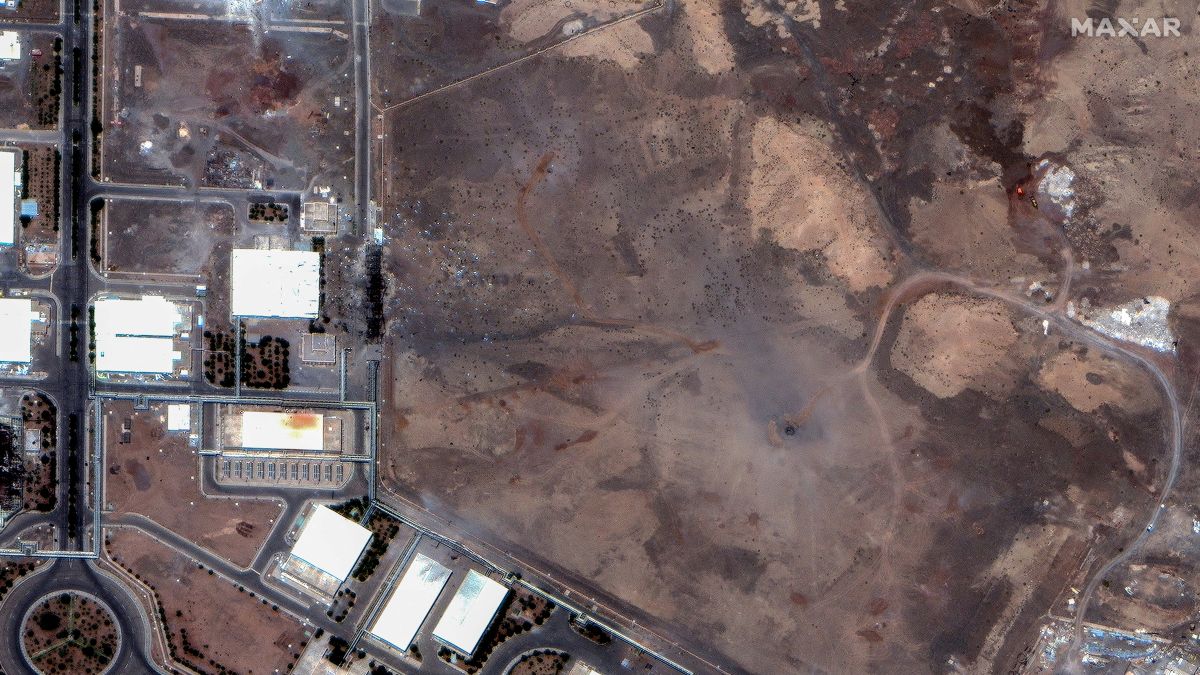Despite US President Donald Trump’s repeated assertions that Iran’s nuclear programme has been “obliterated” and “set back decades,” early intelligence assessments suggest otherwise. A preliminary analysis from the US Defence Intelligence Agency (DIA), reported in American media, indicated that American and Israeli airstrikes on June 21 only delayed Iran’s nuclear activities by a matter of months, not decades, and certainly not eliminated them.
The DIA’s report, though classified, was cited by multiple sources familiar with internal assessments. These officials suggested that the damage, while significant, did not dismantle the core industrial and technological infrastructure that underpins Iran’s nuclear ambitions. The White House has pushed back hard against this narrative, with Press Secretary Karoline Leavitt calling the idea that “unnamed Iranian officials” could know the extent of the damage “nonsense,” asserting instead that “their nuclear weapons program is over.”
IAEA director: Damage ‘severe but not total’
Echoing the cautious tone of US intelligence, Rafael Grossi, the director general of the International Atomic Energy Agency (IAEA), told CBS News that while the strikes had caused severe damage, the destruction was not total. He emphasised that Iran still retained the ability to resume uranium enrichment within a matter of months, noting that the necessary capacities remained in place. He explained that Iran could operate a few cascades of centrifuges to produce enriched uranium, or even less than that.
Grossi also warned against assuming that Iran’s nuclear program had been eliminated. He said that, frankly, one could not claim that everything had disappeared and that nothing remained. He stressed that Iran’s knowledge base and industrial capabilities were still intact, making it possible for enrichment activities to resume once operational challenges were overcome.
Intercepted Iranian communications suggest limited damage
The Washington Post reported that intercepted communications between senior Iranian officials seemed to show a consensus that the attacks were less devastating than initially feared. The newspaper cited four individuals with knowledge of the intercepted messages, suggesting that Iranian leadership had assessed the damage to their facilities as relatively contained.
However, the credibility of these communications remains a subject of debate within intelligence circles. Another source, quoted by Reuters, confirmed their existence but labelled them “unreliable indicators” of the real state of Iran’s nuclear programme.
A disputed narrative from the Trump administration
Trump has remained unwavering in his version of events. In an interview with Fox News’ Sunday Morning Futures, he described the operation as a “spectacular military success,” claiming the nuclear programme was “obliterated like nobody’s ever seen before”. His defence secretary, Pete Hegseth, echoed this, insisting the strikes marked the “end to their nuclear ambitions”.
Yet, during a Pentagon press briefing, Joint Chiefs of Staff Chairman Dan Caine struck a more measured tone. Caine admitted that the full battle damage assessment was still ongoing and said it was “too early” to determine exactly what capabilities Iran retained. He did, however, note that initial assessments showed “extremely severe damage and destruction” at the targeted sites in Fordow, Natanz and Isfahan.
Enrichment capacity could rebound quickly
Despite the high-impact nature of the strikes, experts, including Grossi believed that Iran could resume uranium enrichment relatively quickly. He said if Iran wished to do so, it would be able to start the process again.
He said that Iran was a very sophisticated country in terms of nuclear technology, and that its ability to restart centrifuge operations was based on years of accumulated knowledge that could not simply be undone.
Impact Shorts
More ShortsGrossi also highlighted the absence of IAEA inspectors on the ground as a critical blind spot. Since the strikes, Iran has denied inspectors access to the targeted facilities, citing security and political concerns. Tehran’s UN ambassador, Amir Saeid Iravani, insisted inspectors were “in Iran” but said they could not access specific sites.
Khamenei and mixed Iranian messaging
The response from Iran’s leadership has been uneven. Supreme Leader Ayatollah Ali Khamenei reportedly dismissed the airstrikes as ineffective, saying they achieved “nothing significant”. Yet Foreign Minister Abbas Araghchi acknowledged that the damage was “excessive and serious”. This inconsistency has fuelled speculation that Iran may be deliberately downplaying the impact while preserving the appearance of resilience.
Iran’s military leadership, meanwhile, has expressed scepticism over Israel’s commitment to the recently declared ceasefire. Armed forces chief Abdolrahim Mousavi said Tehran was prepared to respond “with all our power” if provoked again.
Diplomatic options still on the table
Despite the heightened tensions, Grossi reiterated the importance of a diplomatic resolution. He said that the situation, following the military strikes, would ultimately require a long-lasting solution, which could only be a diplomatic one.
He also noted that although Iran had consistently asserted its nuclear program was intended for peaceful purposes, the IAEA had been unable to verify those claims because Iran had refused to answer very important questions.
Military action, limited impact
While the Trump administration has celebrated the June 21 strikes as a decisive blow against Iran’s nuclear programme, a growing body of evidence from intelligence assessments and international experts suggests a far more modest result.
The damage to Iran’s nuclear infrastructure was “severe” but by no means “total,” and the core capabilities — technological, industrial, and intellectual — remain intact. Iran could, according to the IAEA, begin spinning centrifuges again within months.
As Grossi warned, military strikes alone are unlikely to end Iran’s nuclear ambitions. With inspectors still barred and the region on edge, the enduring solution appears to lie not in airpower but in diplomacy.
)